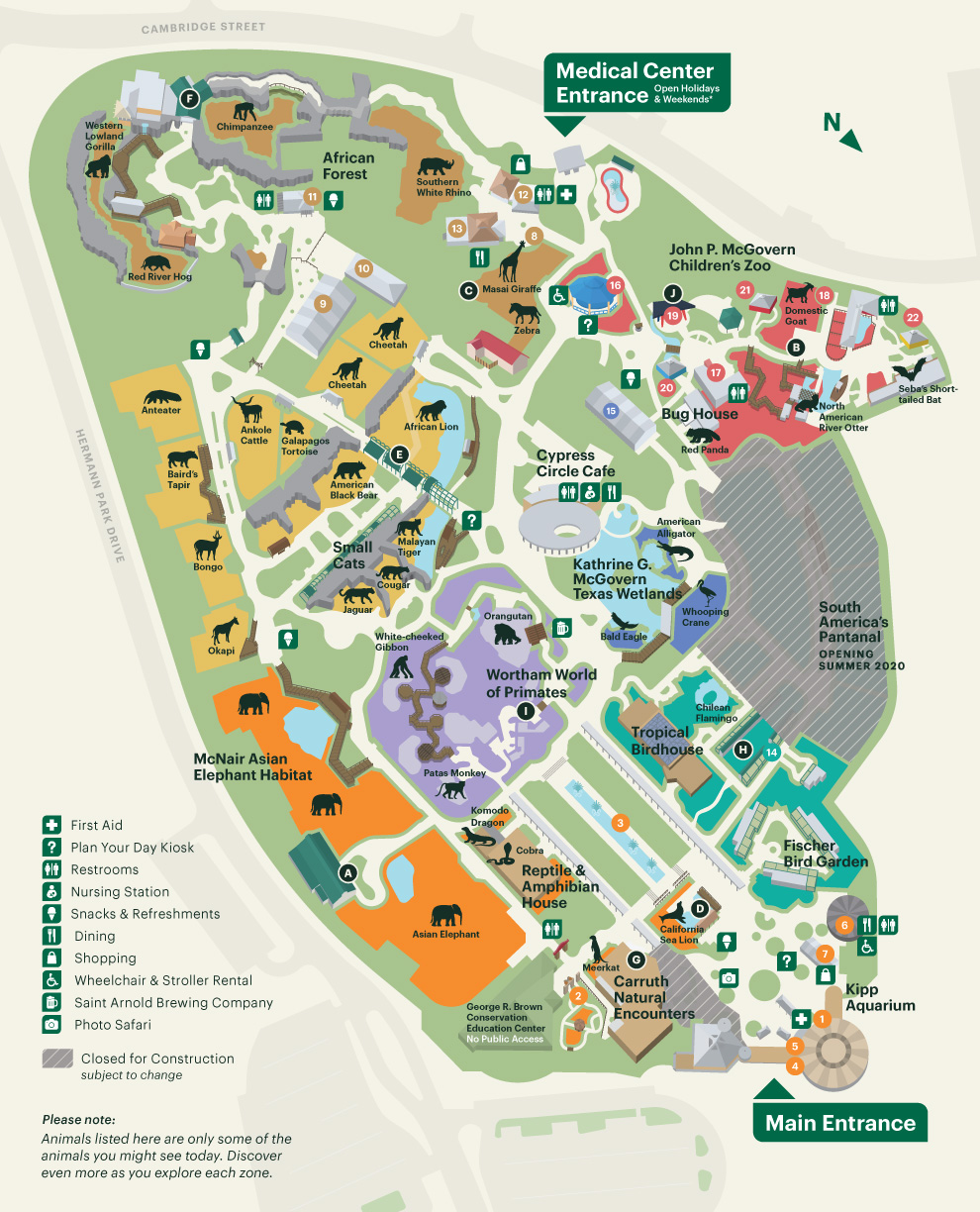Houston Zoo Staff and Volunteers Give a Whoop
On a cold February weekend, Houston Zoo staff and volunteers braved the wind to head to the annual Whooping Crane Festival in Port Aransas. The Houston Zoo is a sponsor of this annual event, which celebrates the incredible conservation efforts at work to bring this species back from the brink of extinction.
We were fortunate enough to see 29 whooping cranes during this trip, along with 65 other species of birds including a sighting of the rare Aplomado falcon! The Festival hosted boat tours to Aransas National Wildlife Refuge, opportunities to bird at a local nature space, and several phenomenal lectures that effortlessly wove together conservation science and empathetic storytelling. During one of our favorites, photographer Michael Forsberg shared his experience following the cranes along their annual migration route and introduced us to a female whooper named, “Husker Red.” He shared tales from observing her throughout the years, and we fell in love with her through his storytelling!
Warmed by the excitement from the talks we attended, our group beat the sunrise to board a boat bound for Aransas National Wildlife Refuge. The large, deep-sea vessel was well equipped to handle the choppy waters and frigid winds to bring us to the cranes!
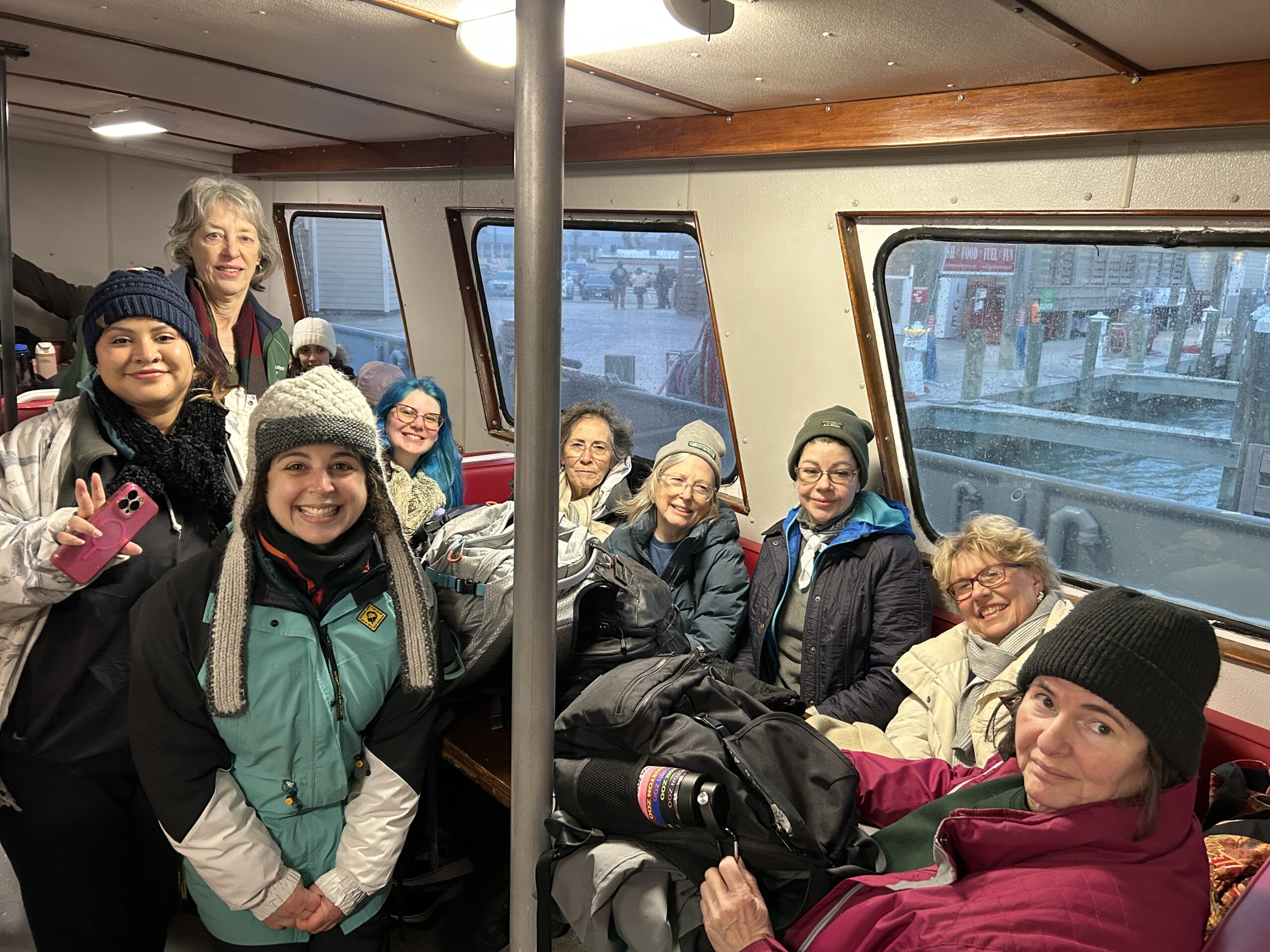
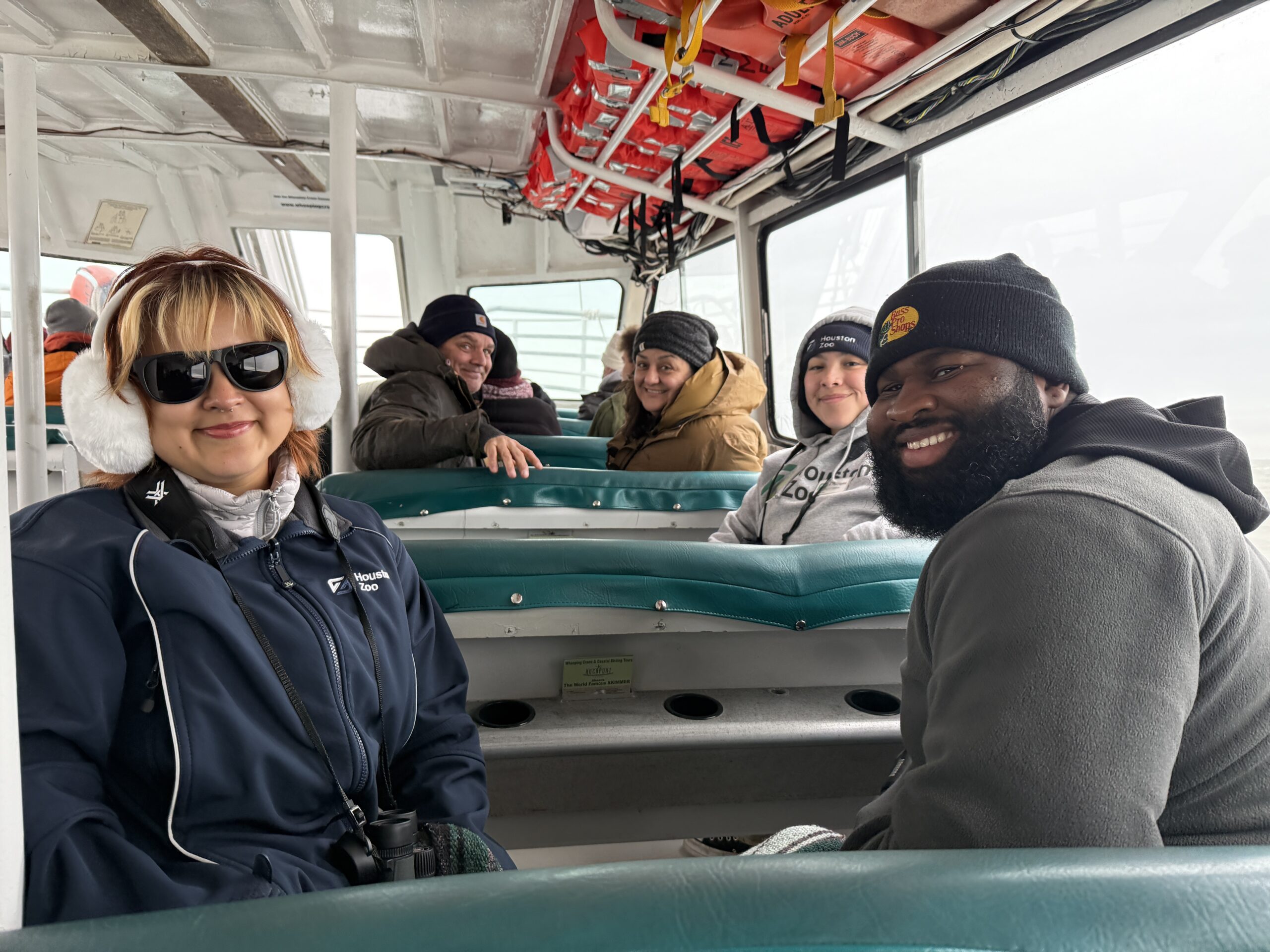
The boat tour was successful, and we saw our first 13 cranes on this outing. The most exciting part of this experience was seeing a young crane, called a colt, fishing for blue crabs alongside its parents. These cinnamon-colored youngsters travel with their parents from Canada to Port Aransas to spend the winter, but they’ll break away to find their own group as young adults sometime during the spring return trip back to Canada.

After the boat tour, we braved the cold for another hour to go birding at a local nature hot spot. The wind was not letting up, but we still saw avocets, dowagers, reddish egrets, the dinosaur-like white pelicans, and so many more.
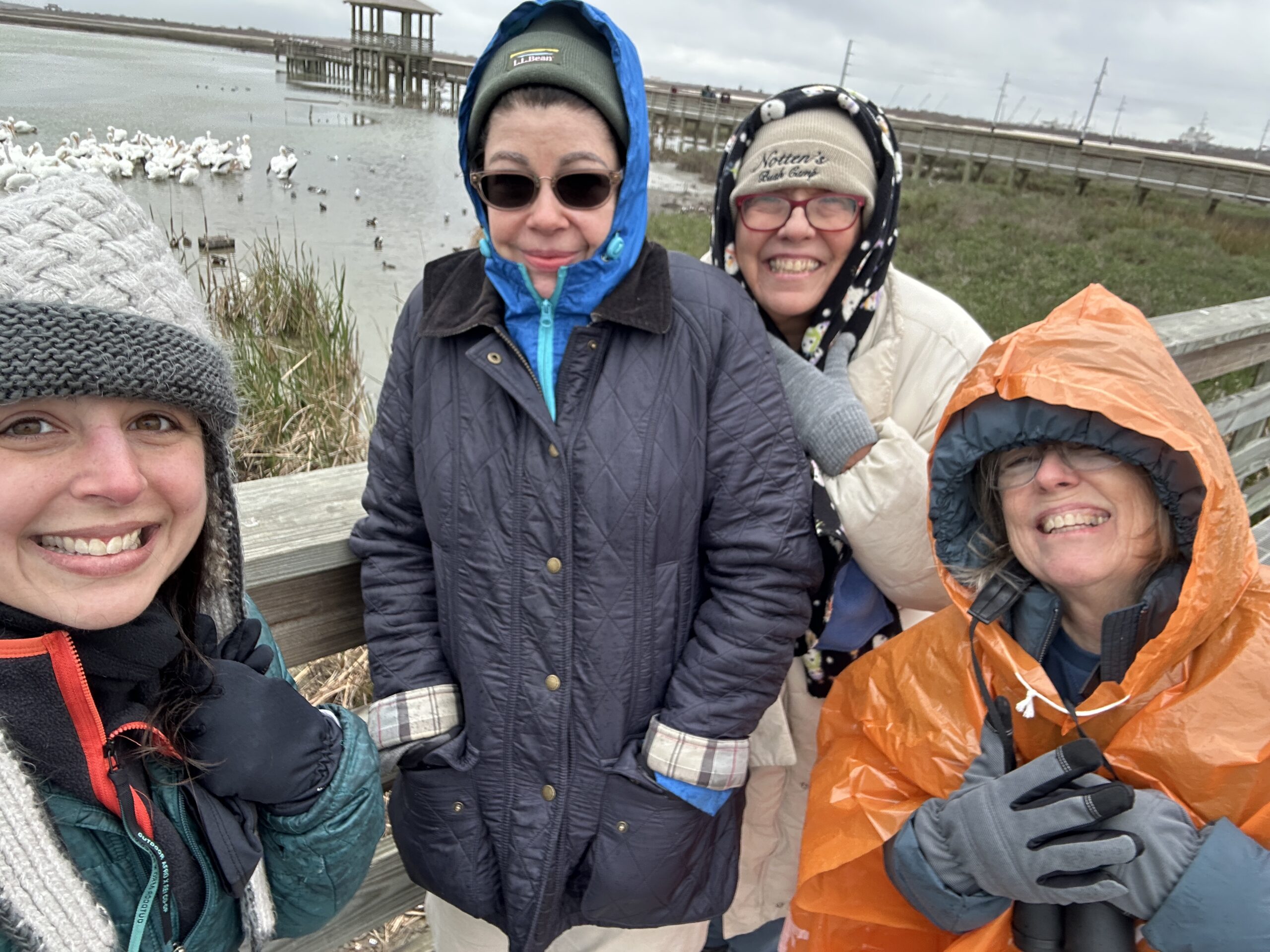 Our excitement upon seeing the cranes, and so many species of birds in one place, couldn’t be dampened by the weather. While we had one more stop to make on our way home, we already agreed that the trip was a resounding success – we couldn’t wait to get back and start sharing our experiences with our fellow staff, volunteers, and our guests!
Our excitement upon seeing the cranes, and so many species of birds in one place, couldn’t be dampened by the weather. While we had one more stop to make on our way home, we already agreed that the trip was a resounding success – we couldn’t wait to get back and start sharing our experiences with our fellow staff, volunteers, and our guests!
On our way home that Sunday, we decided to stop in Rockport to see the whooping cranes near the Big Tree, an estimated 1100-year-old oak tree in the local state park.. There were three cranes that we could easily see from the side of the road, so we safely pulled over to get photos and add them to our weekend count.
As we were admiring them, one of the volunteers noticed a distinguishable white-red-white band:
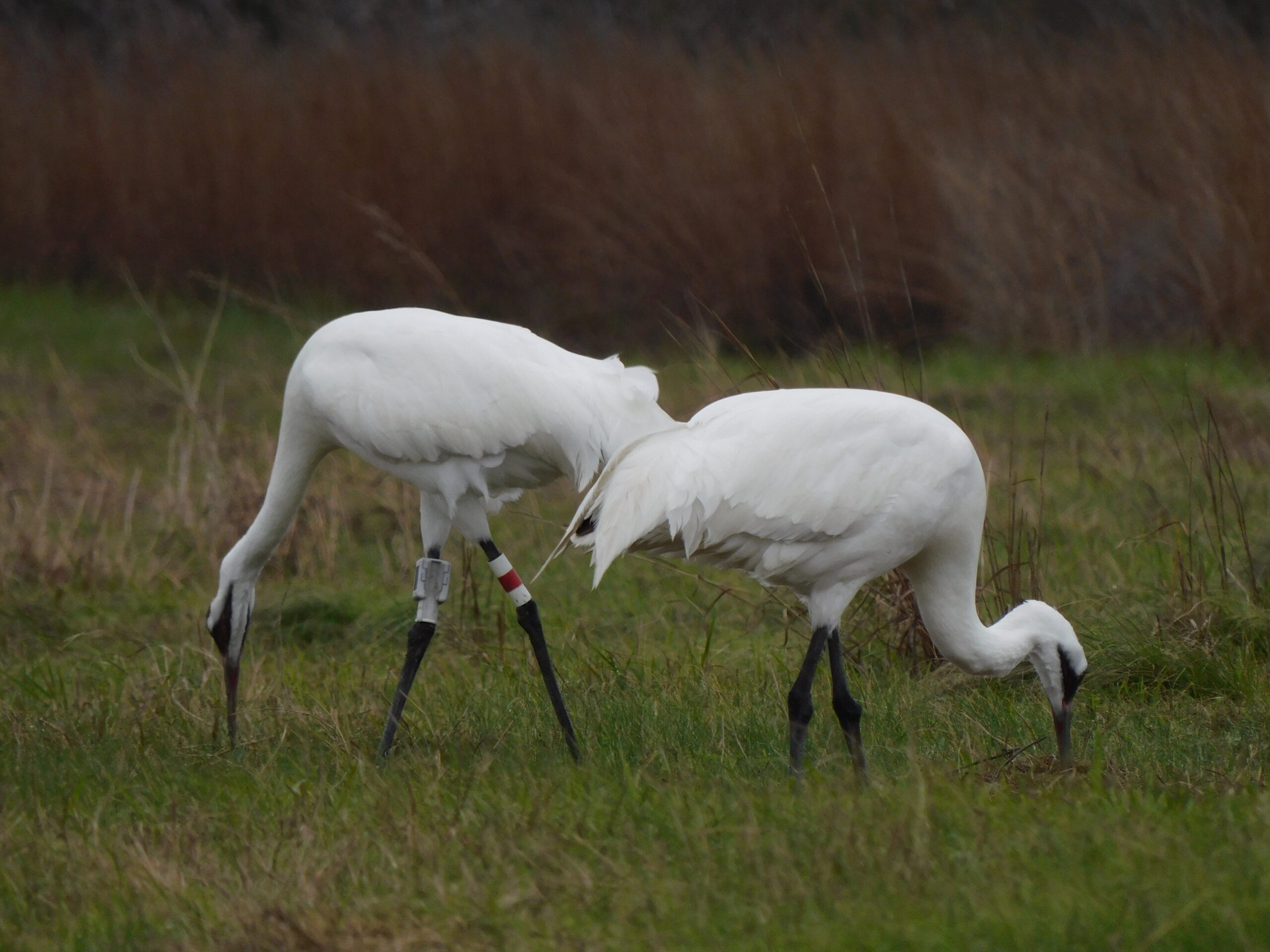 It was none other than “Husker Red,” gracing us with her presence! There was a collective moment of awed silence from our group as we watched her move effortlessly through the field. She had two travel companions, one of which was a male. There was a collective gasp of excitement as he started to display his mating dance for her – followed by a lot of laughter as Husker Red completely turned and walked away from him. We were so excited to “meet” this crane that we had heard so much about just two days before.
It was none other than “Husker Red,” gracing us with her presence! There was a collective moment of awed silence from our group as we watched her move effortlessly through the field. She had two travel companions, one of which was a male. There was a collective gasp of excitement as he started to display his mating dance for her – followed by a lot of laughter as Husker Red completely turned and walked away from him. We were so excited to “meet” this crane that we had heard so much about just two days before.
While the amazing Houston Zoo volunteers began the trek back home after seeing “Husker Red”, Houston Zoo staff headed to Port O’Connor to work with San Antonio Bay Partnership and engage in the vital practice of cleaning up abandoned crab traps. Beginning in 2001, Texas Parks and Wildlife instituted an annual, 10-day crab trap closure period that allows volunteers to go out and collect abandoned crab traps, helping to end the unintended practice of ghost fishing in which animals like the blue crab, diamondback terrapin, and various species of fish, can become trapped. With the assistance of local air boat captains, Zoo staff were able to remove 25 derelict traps from the bay. Removing these abandoned traps not only saves blue crabs, the primary source of food for whooping cranes, but also saves other wild animals from potential injury and entanglement.
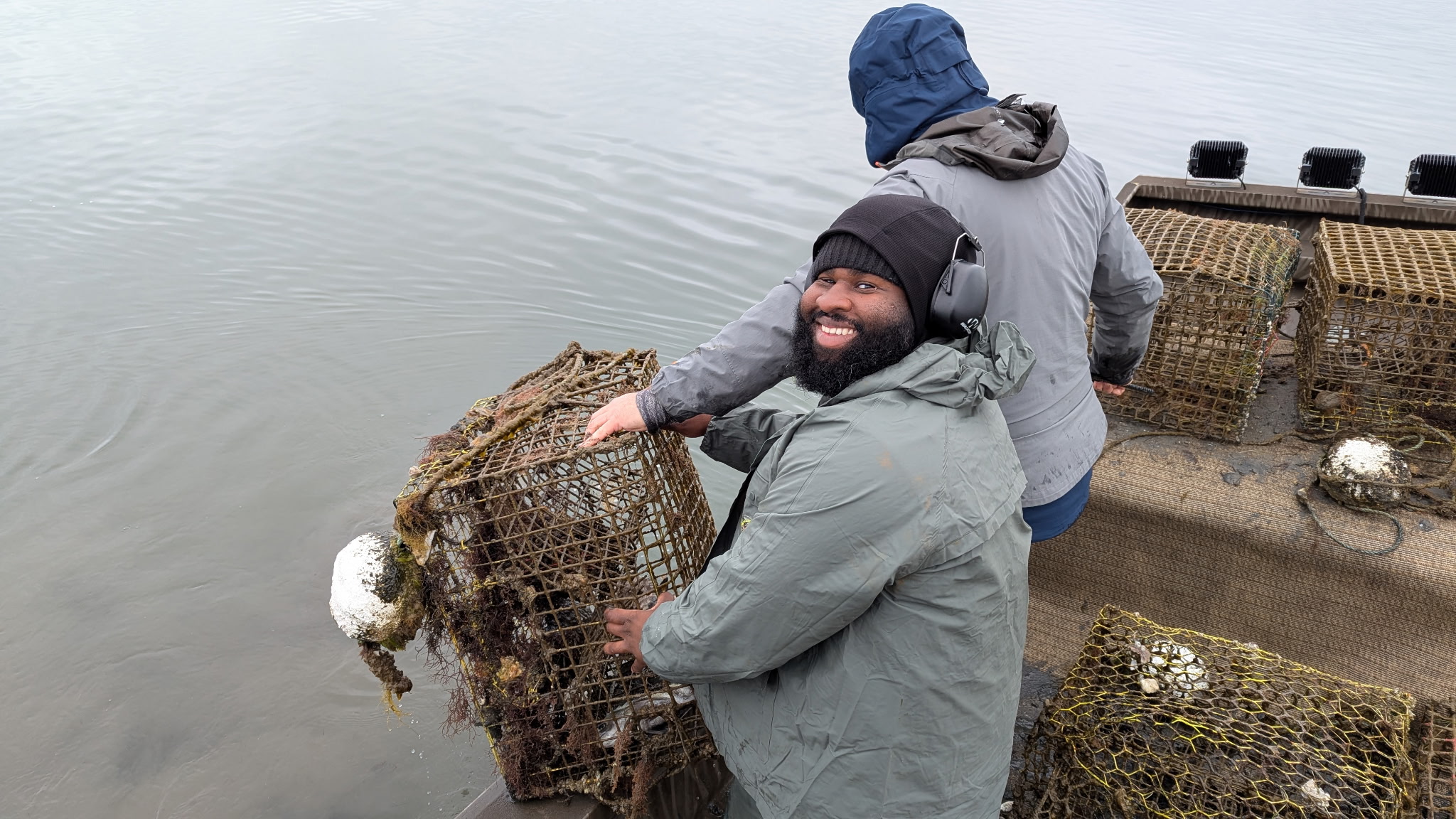 In addition to collecting abandoned crab traps, Houston Zoo Staff also assisted Mid-Coast Sea Turtle Rescue with rescuing cold stunned turtles in Matagorda Bay. Temperatures below 50◦F can cause sea turtles to become lethargic and unable to dive below the surface; this can lead to injury and even death if they are not rescued.
In addition to collecting abandoned crab traps, Houston Zoo Staff also assisted Mid-Coast Sea Turtle Rescue with rescuing cold stunned turtles in Matagorda Bay. Temperatures below 50◦F can cause sea turtles to become lethargic and unable to dive below the surface; this can lead to injury and even death if they are not rescued.
 Houston Zoo staff rescued three sea turtles during this cold-stunning event. Twelve additional turtles were rescued by volunteers from San Antonio Bay Partnerships and Mid-Coast Sea Turtle Rescue. All the rescued sea turtles were ferried over to the Texas State Aquarium for rehabilitation and recovery.
Houston Zoo staff rescued three sea turtles during this cold-stunning event. Twelve additional turtles were rescued by volunteers from San Antonio Bay Partnerships and Mid-Coast Sea Turtle Rescue. All the rescued sea turtles were ferried over to the Texas State Aquarium for rehabilitation and recovery.
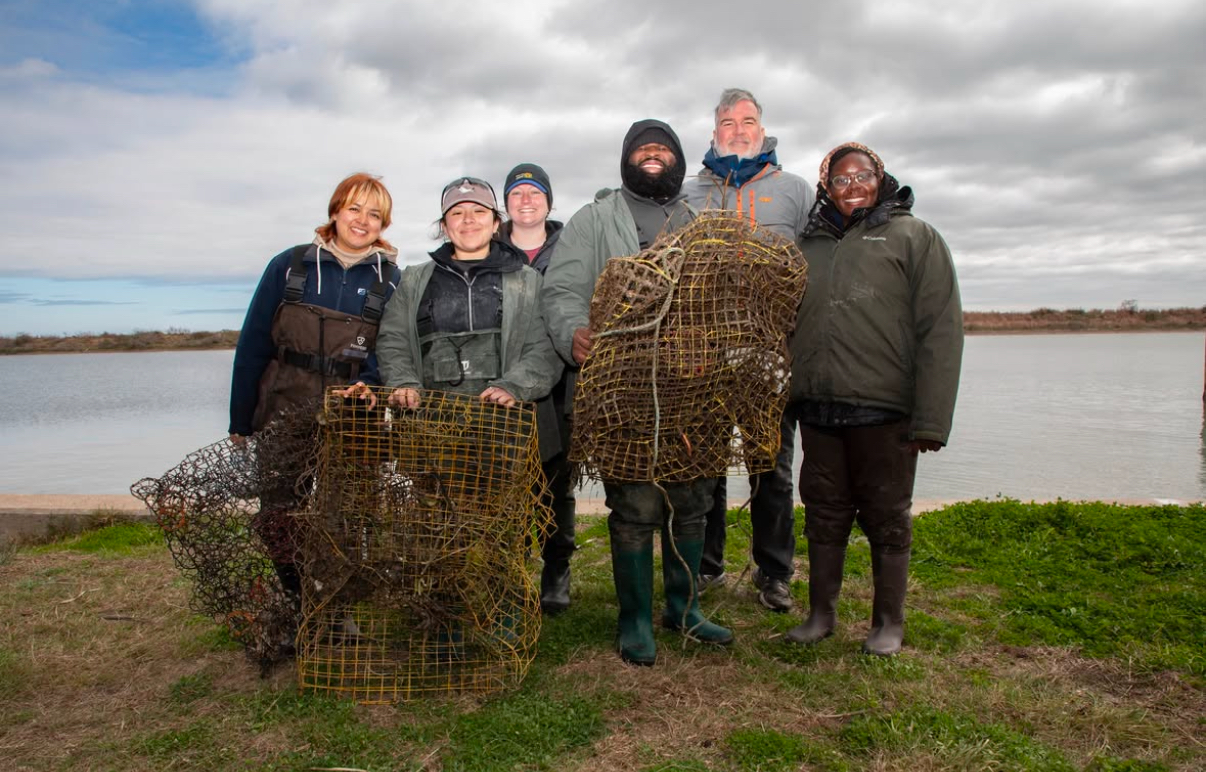 Storytelling is such a powerful tool for conservation. The combination of seeing the whooping cranes in the wild, and feeling so connected to one simply by learning her name, and taking action by heading out to the bay to engage in wildlife-saving conservation work, fostered our Houston Zoo team’s commitment and vision to be a global leader in the movement to save wildlife.
Storytelling is such a powerful tool for conservation. The combination of seeing the whooping cranes in the wild, and feeling so connected to one simply by learning her name, and taking action by heading out to the bay to engage in wildlife-saving conservation work, fostered our Houston Zoo team’s commitment and vision to be a global leader in the movement to save wildlife.
